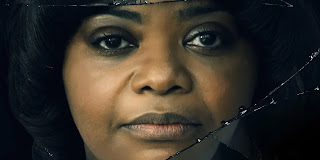Lighting is important in building the creepy atmosphere in Blue Hole. The film uses dim lighting and shadows to make the setting look mysterious and scary. The darkness hides parts of the environment, so the audience feels unsure about what could be hiding there. The lighting also makes the characters seem isolated and vulnerable. The way the shots are framed also adds to the feeling that the characters are trapped in a dangerous place, with the camera focusing on their small size in such a big, threatening environment.
The sound in Blue Hole helps build tension and fear. The film uses eerie noises, like whispers or water splashing, to make the audience feel uneasy. There are also moments of silence, which make the audience feel like something is about to happen. Sudden loud sounds, like screams or crashes, startle the audience, making them jump and adding to the fear. These sound effects create a tense and unpredictable atmosphere that keeps the viewer on edge.
The setting, costumes, and props also follow common horror conventions. The characters wear simple, dark clothing, which makes them blend into the environment and appear vulnerable. The film is set in isolated and eerie places, like water or abandoned areas, which create a sense of danger. The lighting, acting, and props all add to the creepy mood. The actors don’t say much but show fear through their faces and actions. Props, like disturbing items found in the water, make the setting feel more unsettling.
Editing in Blue Hole helps keep the suspense high. Quick cuts between scenes keep the audience on edge, while longer shots let the tension build. Slow-motion is used in important moments to make them feel scarier, and abrupt cuts create jump scares that surprise the audience. The editing style makes the film feel like it’s always building towards something intense, keeping the viewer hooked and nervous.
Other films in the thriller/horror genre, like The Babadook, Get Out, Hereditary, A Quiet Place, and The Witch, use similar techniques to build fear. These films, like Blue Hole, create tension by focusing on atmosphere and making the characters feel vulnerable.
What I like about thriller/horror films is how they can create fear without showing everything. The fear often comes from the unknown, from things we can’t see or understand. I also enjoy when the film makes me question what’s real, which makes it feel more frightening. The genre keeps me interested with surprises and things I don’t expect.
However, I don’t always like films that rely too much on jump scares or gore. Jump scares can feel fake if they’re not used well, and too much blood or violence can take away from the tension. I prefer films that build up fear slowly and let the audience’s imagination fill in the scary parts. The best horror films don’t need to show everything, and sometimes what we don’t see is the scariest part.
.jpg)



Comments
Post a Comment